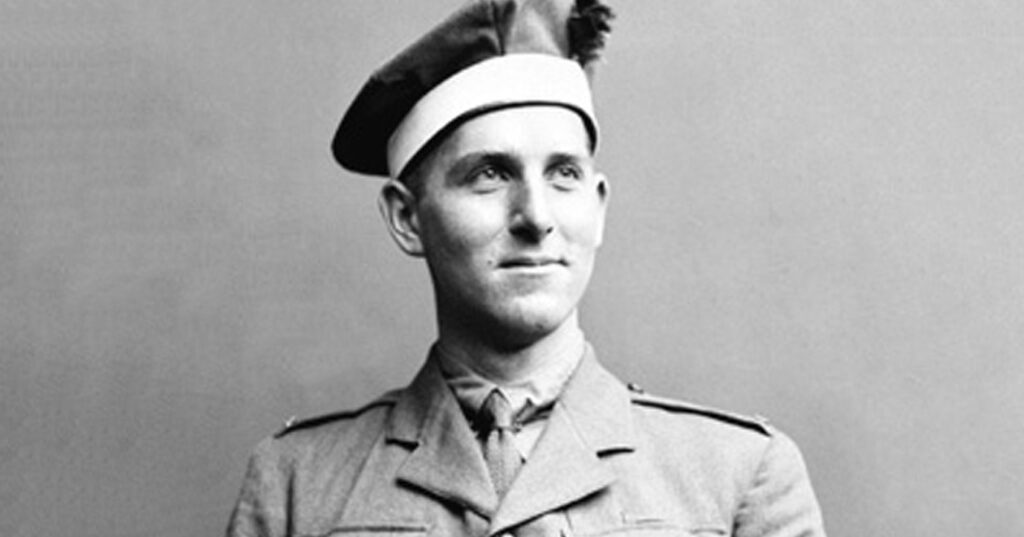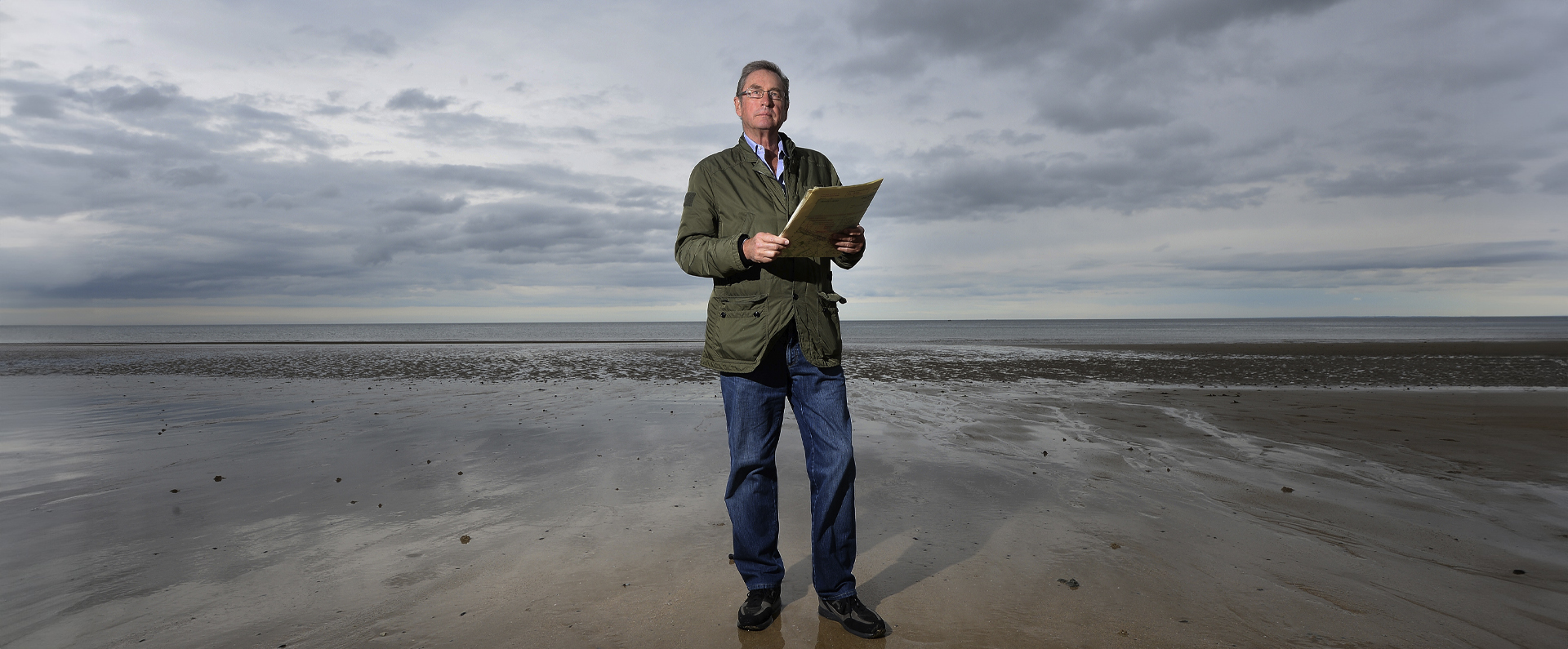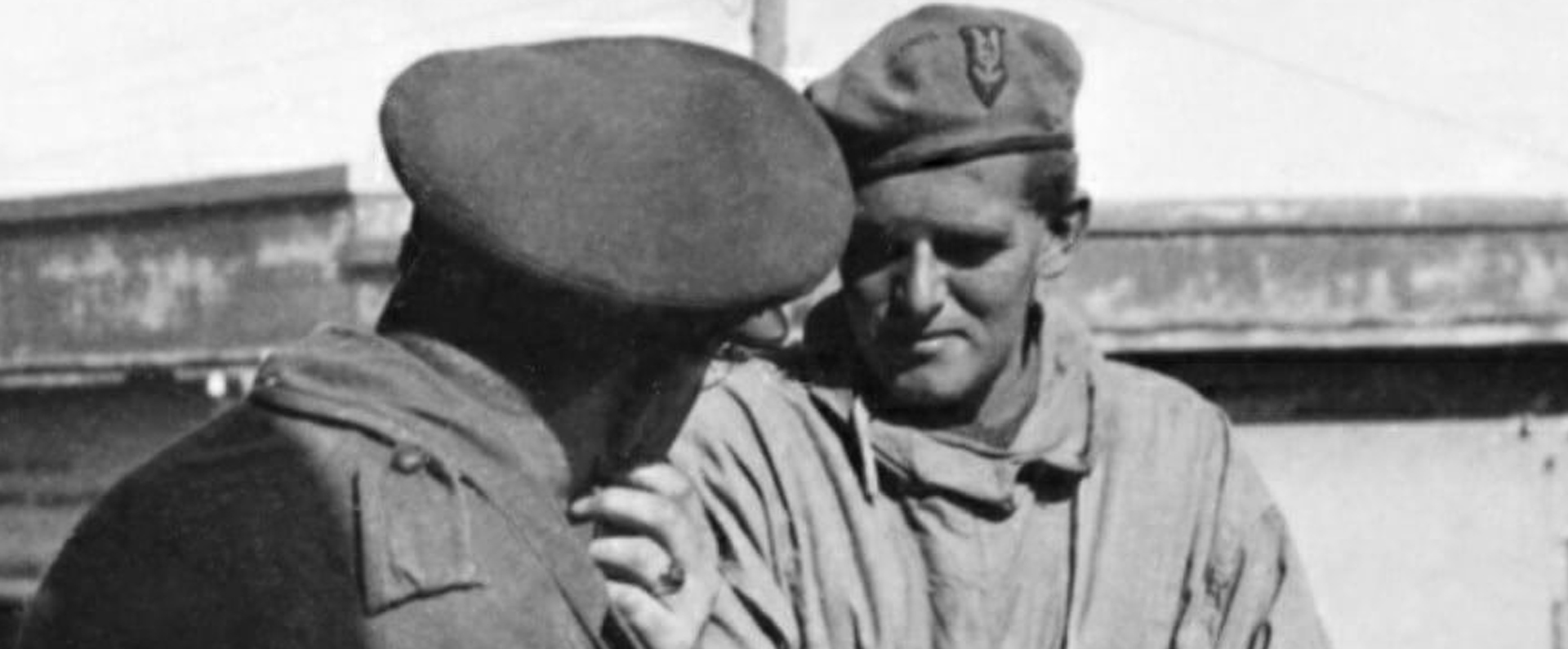
Published in Britain at War in October 2018.
Lieutenant Thomas Fasti Dinesen VC: aggression
Thomas Fasti Dinesen was born in Rungsted, near Copenhagen, the capital of Denmark, on 9 August 1892. He was the son of Captain Adolph Dinesen and his wife Ingeborg (née Westenholz). Thomas Dinesen came from a wealthy, aristocratic, military family and his grandfather, as well as his father, served as an officer in the Danish Army.
His sister was Izak Dinesen (later Baroness Karen Blixen), the author of Out of Africa (in the film of the same name she is played by Meryl Streep) and other works. Dinesen was educated at Rungsted State School and the Polytechnical School, Copenhagen.
Before the war, he worked as an engineer and in 1914 he became a member of the Academic Rifle Corps in which he established himself as a first-class shot. After the outbreak of the Great War in August 1914, he tried to join the French and British Armies but they would only accept their own nationals. In his book about his wartime experiences, Merry Hell! A Dane with the Canadians, Dinesen wrote:
“But from the very first day of August [1914] I knew that, sooner or later, I should have to leave everything and go in search of the real war. There was – in my set, anyhow – a firm conviction [that] the future of humanity, the continuance of civilization, the salvation of the world, depended on the subjugation of Germany.”
In April 1917, with Denmark still neutral and with Dinesen desperate to fight the Germans, he sailed to America where once again he was unable to enlist into the US Forces. He finally succeeded in getting accepted for military service when he went to the New York recruiting office of the Canadian Army in June 1917.
Dinesen enlisted as a private into the Royal Highlanders of Canada and was posted to Guy Street Barracks, Montreal. Three months later, he was posted to the UK where he underwent training at Bramshott and Aldershot, both in Hampshire. In March 1918, Dinesen travelled to France with his battalion where he volunteered for numerous trench raids, even though he initially took part in no major battles. During their early days on the frontline, Dinesen and his comrades were subjected to both gas and shell attacks.
In Merry Hell! he wrote: “Hizzz-Crash!! the shells are bursting both in front and behind our hiding-place; the very ground is trembling and we too tremble. Our hair is standing on end – but – are we scared? Are we down- hearted? No!!”
In May 1918, during a spell behind the frontline, Dinesen was chosen to take part in a Non-Commissioned Officer (NCO) training course, which took up most of June until he returned to the frontline in early July. At times, he bemoaned his lowly rank, writing: “I wish I were an officer and could get a chance to follow events! A private soldier is moved about like a tethered cow.”
During an offensive, Dinesen noted in Merry Hell! : “The whole of the western horizon bursts into flame as if the earth had opened.”
In his book, Dinesen related how he had been told by an officer that the 42nd Battalion’s objective would be to take the town of Parvillers. Dinesen wrote modestly about his own part in the fighting and his VC but he did describe some of the action:
“I turn a corner quickly – two grey Germans stand straight in front of me … Two red flashes straight into my face – done for already! – but they haven’t hit me, so now it’s my turn. A snap-shot at one of the two, and the other disappears round a corner. The road is free! ‘Come on boys, give them hell!’”
Dinesen was awarded the VC for his courage displayed during the Battle of Amiens on 12 August 1918, three days after his twenty-sixth birthday. His citation announced in the London Gazette on 26 October 1918 read:
“For most conspicuous and continuous bravery displayed during ten hours of hand-to-hand fighting which led to the capture of over a mile of strongly garrisoned and stubbornly defended enemy trenches.
“Five times in succession he rushed forward alone and single-handed put hostile machine guns out of action, accounting for twelve of the enemy with bomb and bayonet. His sustained valour and resourcefulness inspired his comrades at a very critical stage of the action, and were an example to all.”
On 21 August 1918, during more heavy fighting, Dinesen displayed further bravery that led to the award of the French Croix de Guerre. His other decorations included the Knight’s Cross of the Order of Dannebrog from the King of Denmark. Dinesen was promoted to acting corporal in August 1918 and then spent a month at an officers’ school. On 5 November, he was commissioned as a lieutenant and, six days later, when the war ended, he was based at Mons, Belgium.
Dinesen received his VC from George V at an investiture at Buckingham Palace on 13 December 1918. He was demobbed in January 1919, still with the rank of lieutenant. Dinesen wrote: “We won the war … I got off without a scratch, with all my aspirations and dreams fulfilled. And they rewarded me, into the bargain!”
From 1920 to 1925, Dinesen lived in Kenya, working as a farmer and civil engineer. In the aftermath of the war, he helped his sister manage her coffee farm in the Ngong hills, south-west of Nairobi. From 1925 onwards, and having returned to live in Denmark, Dinesen farmed an estate in Jutland.
He married Joanna Lindhardt, the daughter of the Lutheran Dean of Arhus, in Denmark, in April 1926 and the couple went on to have two daughters. Dinesen was also an enthusiastic author and he penned several books, including a biography of his famous sister. Dinesen died in Leerbaek, Denmark, on 10 March 1979, aged eighty-six, and is buried in the family plot at Horsholm Cemetery, Rungsted, near Copenhagen.
I purchased the medal group of this colourful character privately in 2013 and I feel privileged to be the custodian of such a distinguished set of gallantry and service medals.
Download a PDF of the original Britain at War article
For more information, visit:
LordAshcroftOnBravery.com


